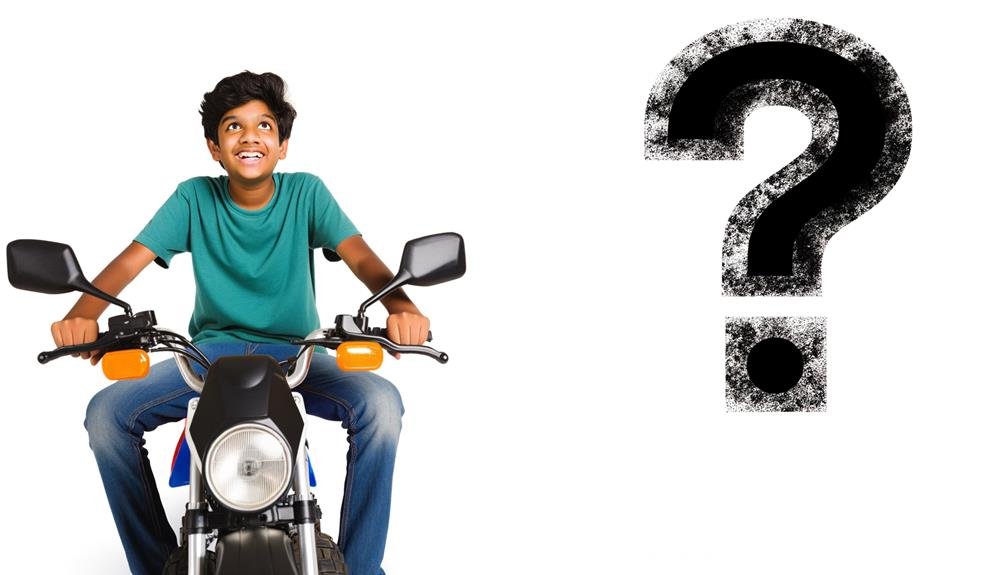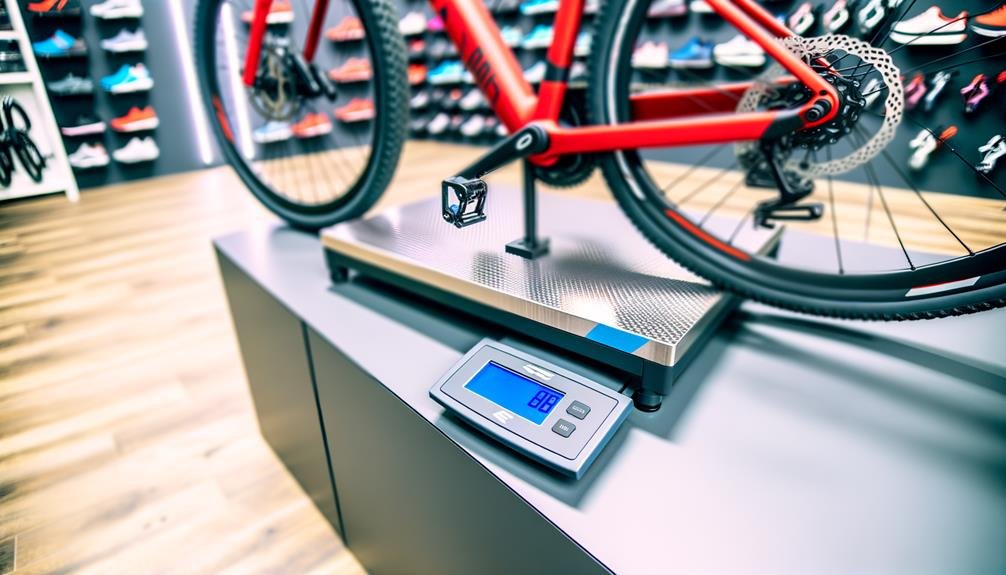Charles Miller is a veteran bike enthusiast with over 12 years of experience dealing with bikes as a mechanic. Despite immense love and expertise for...
Have you ever considered the art and science that goes into designing an electric bike?
It's not just about strapping a battery onto a traditional bicycle, but rather a careful process of marrying engineering principles with aesthetic design.
You need to contemplate the weight distribution, the power required, the type of terrain it will be used on, and, of course, the regulatory standards it must meet.
As we delve into the intricacies of this process, you'll find it's both an exciting challenge and a test of innovation.
So, are you ready to embark on this thrilling journey of design and discovery?
Key Takeaways
- Consider the intended usage scenario, terrain, and performance requirements when choosing a bike model.
- Pinpoint crucial mechatronics system modules like the frame, riding system, brake system, steering system, manpower drive system, and electric drive system.
- Understand the electrical system components such as the battery, motor, controller, and throttle, and how they contribute to the bike's performance.
- Follow proper installation procedures for the E-Bike Kit, ensuring compatibility with the bike's current setup and securely attaching all components.
Choosing the Right Bike Model
When you set out to design an electric bike, it's crucial to nail down the right bike model by carefully considering the intended usage scenario, terrain, and specific performance requirements such as maximum speed, acceleration, and climbing ability. Whether you're eyeing a sleek mountain bike for rugged trails or opting for compact folding bikes for city commuting, choosing the right bike model becomes an essential first step in your journey.
Start by defining your desired performance characteristics. Do you need a good bike that can swiftly accelerate in traffic or one with superior climbing ability for steep slopes? Your answers will guide your choice of bike frame and components. Material, ergonomics, and structure of the frame play decisive roles in shaping the bike's performance and user experience.
Next, choose your component suppliers wisely. Tires, rims, and brake systems should align with your bike model's requirements and expected road conditions. Before you proceed, evaluate the benefits of building an inexpensive electric bicycle. Consider the type of bike that best fits the conversion kit and battery for cost-effective and eco-friendly transportation.
Identifying Necessary Components
Diving into the heart of your electric bike design, you'll need to pinpoint crucial mechatronics system modules like the frame, riding system, brake system, steering system, manpower drive system, and electric drive system.
When you start to build an e-bike, the frame is the foundation. It needs to be sturdy and accommodating for all components.
The riding system, including the front wheel and bottom bracket, should provide a seamless interface between rider and machine.
The brake system must guarantee safety, so consider reputable suppliers like Shimano, Sram, Magura, or Tektro.
Your electric bikes' steering system should offer precise control, while the manpower drive system works in harmony with the electric drive system. The latter's layout can range from front hub, rear hub, middle motor, or a separate motor. The electric motor is the heart of this system.
Proper selection of tire and rim specifications is also crucial. Factors such as tire width, diameter, road conditions, and weight greatly influence performance.
Understanding the Electrical System

Having nailed down the mechanical elements of your e-bike, let's now turn our focus to the electrical system, which forms the powerhouse of your design. This system, when well-orchestrated, brings your electric bicycle to life, turning it from a simple frame into a high-performance machine.
Your system's heart is the battery, the source of all power. It's essential to ensure it's fully charged for optimal performance. The kind of motor you choose, whether hub motors or mid-drive motors, will influence how much power is generated and how it's transferred to the wheels.
The controller, a key component, acts like a conductor, orchestrating the power flow from the battery to the motor. This not only controls the speed but also the torque, making your ride smooth, comfortable, and in your control.
Lastly, the throttle, whether twist or thumb, is your direct connection to the power system. It's like the voice of your command, dictating how much power you want to unleash.
Congratulations, you've built an electric bike's electrical system, a critical step in designing an e-bike. Now, you're not just part of the e-bike community—you're an innovator within it.
Installation of the E-Bike Kit
Now, let's frequently delve into the exciting phase of installing the e-bike kit, ensuring you understand the critical components like the throttle, speed controller, and hub motor wheel, and their interplay in achieving a smooth ride.
You need to choose between a front or rear wheel kit based on your bike's current setup. If you have disc brakes, you'll need a kit compatible with them. A 30 km/h speed controller is typically sufficient for most riders.
Now, the installation of the e-bike kit mainly involves three steps:
- Replacing the wheel: Whether it's front or rear, you'll need to replace your current wheel with the hub motor wheel. Take care not to damage the spokes during this process.
- Installing the speed controller: This device should be securely mounted to your bike, often on the frame. It's responsible for regulating the power from the battery to the motor.
- Connecting the throttle: This is your speed control, usually mounted on the handlebars. It's connected to the speed controller, allowing you to adjust your e-bike's speed.
You've now transformed your regular bike into an electric one, providing an innovative way to enjoy your ride.
Safety Considerations and Testing

After successfully installing your e-bike kit, it's essential to turn your attention to safety considerations and rigorous testing, ensuring your newly converted electric bike meets all regulatory standards, handles a variety of road conditions, and offers a secure ride.
This process, as integral in San Francisco as it's elsewhere, involves assessing all components, from the wheel using the motor to the brake levers. Make sure to test both front and back brakes for sufficient stopping power, a crucial aspect of safe riding.
Examine the secure attachment and placement of the battery to prevent electrical malfunction risks. Your bike's frame integrity and the electrical system's reliability are also paramount. Standards such as EN 15194 and CPSC16 CFR Part 1512 provide a benchmark for safety considerations.
Frequently Asked Questions
Is It Possible to Make Your Own Electric Bike?
Absolutely, you can build your own electric bike! With careful battery selection, frame design, speed regulation, pedal assistance, safety measures, and DIY kits, you're on your way to a personalised, eco-friendly ride.
How Much Does It Cost to Build a Electric Bike?
Considering the cost to build an electric bike involves analyzing your budget, understanding the cost breakdown, and considering DIY expenses. Price factors include the bike, conversion kit, and battery. It's a cost-efficient investment.
How to Manufacture E-Bikes?
You'll begin by creating a sturdy bike framework, then proceed with careful component sourcing. Battery selection and motor placement are crucial. Next, install a reliable control system. Finally, the assembly process brings your e-bike to life.
What Is the Methodology of Electric Bike?
You'll enhance bike efficiency through meticulous selection of battery types and motor choices. Consider innovative charging solutions, and integrate a pedal assist drive system for a more inclusive, user-friendly e-bike design methodology.
Conclusion
You've done it! You've designed an affordable, eco-friendly e-bike perfectly tailored to your needs. Imagine cruising down the bike path, the wind whipping past, the hum of your electric drive system beneath you.
You're not just riding; you're part of a sustainable transport revolution. Remember, safety is paramount. Check all systems regularly and ride responsibly.
Now, it's time to hit the road on your innovative, custom electric bike. The future of transportation is here, and you're leading the charge.

Charles Miller is a veteran bike enthusiast with over 12 years of experience dealing with bikes as a mechanic. Despite immense love and expertise for his Tacoma, he rides his Trek Ebike more. Anytime you meet him, you’ll either hear him talking about Bikes, or writing about all things bikes and cars on this blog.
More Posts


